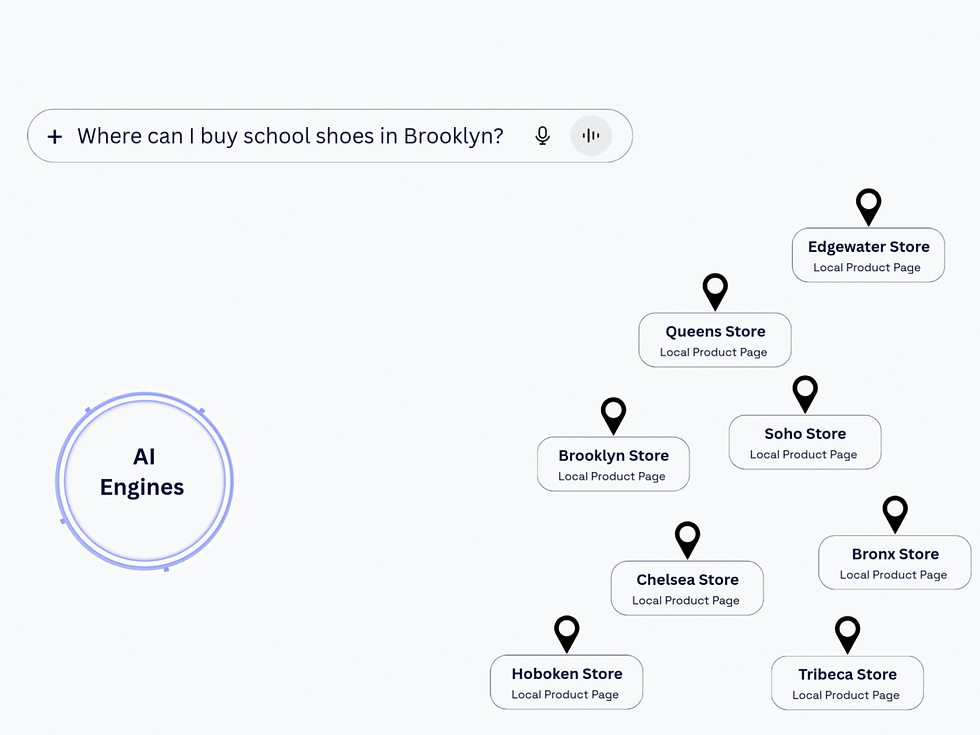The Coming Moat: How Marketplaces Are Using AI to Lock Out Brands
- Daniel Carnerero

- Sep 8
- 4 min read
Updated: Sep 13
For years, digital commerce has been about clicks. Get the customer to your site, persuade them to add to cart, hope they convert. That’s the game most brands have been playing.
But the game board has shifted.
A new report from CB Insights on AI readiness in retail makes it clear: Amazon and Alibaba aren’t just a little ahead, they’re in a completely different league. While most retailers are still patching together partnerships with Google, Microsoft, or AWS, these two giants have been quietly building their own AI foundations, custom chips, proprietary models, and massive commerce graphs that make them not just retailers, but infrastructure companies.
And here’s the twist: that infrastructure is being designed for a world where agents, not humans, are the primary decision-makers in commerce.
Agents don’t shop like people do
When an AI agent is asked to “the best noise-cancelling headphones under €300,” it doesn’t compare glossy websites or get distracted by a homepage banner. It looks for the shortest, most reliable path to resolution. Which catalog is clean and structured? Which checkout is frictionless? Who guarantees shipping and returns?
Every time, the answer points toward marketplaces. Amazon’s “Buy with Prime” isn’t just a perk for shoppers, it’s a signal to agents that the transaction is guaranteed. Alibaba’s logistics network does the same. From an agent’s perspective, marketplaces aren’t just an option; they’re the safest option.
That’s the supply-side moat: control over catalog, checkout, fulfillment, and returns. All the unglamorous plumbing of retail that, in an AI-agent world, becomes the decisive factor.
Why this is dangerous for brands
For brands and omnichannel retailers, this shift is existential. Most are still relying on traffic from Google or Meta to land on their site. But zero-click search is already eroding those pathways. And if AI agents go one step further, from answering to acting, then the brand’s own channel risks being skipped altogether.
Imagine asking Perplexity to buy you a pair of trainers. It compares specs, prices, reviews, then completes the transaction in-chat using a partner like PayPal. If your product feed isn’t structured, or your checkout isn’t agent-friendly, you don’t even appear in the choice set. You’re not just lower in the funnel, you’re invisible.
That’s the real moat marketplaces are digging: becoming the default environment where agents resolve customer intent end-to-end.
But brands aren’t powerless
Here’s the good news: while Amazon and Alibaba may own infrastructure, brands can still win in discovery. Agents need structured, reliable signals to recommend products. If you’re absent from that layer, you’re invisible. If you’re present, you’re back in the game.
This is where companies like TNG Shopper come in. Multiple brands are already turning to them as an obvious first step: before dreaming about autonomous shopping or building your own AI stack, make sure your products are actually discoverable by AI engines today.
Think of it as the defensive fence around your brand. TNG Shopper helps ensure your products show up in ChatGPT, Perplexity, Gemini, and other AI-powered search experiences. It’s about taking what you already have, physical stores, product catalogs, local presence, and translating that into the structured signals agents require.
Because here’s the reality: if you’re not local, you won’t compete with larger brands on Google; if you’re not structured, you won’t compete in AI search; and if you think ads alone will cover the gap, you’ll burn the budget without building defensibility.
A story of two futures
Picture two retailers five years from now.
One has invested in structured feeds, clean identifiers, and integrations that make its products readable and purchasable by agents. When a consumer says, “buy me a coffee grinder under €150,” the agent surfaces that brand, checks out securely, and books next-day delivery. That brand remains in the consideration set, even if the consumer never visits its website.
The other retailer never adapted. Its products aren’t structured, its checkout isn’t programmable, and agents can’t validate its stock or delivery promises. When asked the same question, the agent defaults to Amazon, because it knows the transaction will close.
Both retailers may have beautiful stores and strong brand equity. But only one exists in the new AI-agent reality.
The bigger choice
AI will absolutely transform retail. The question is not if, but who benefits. Marketplaces have made their move: they’re turning logistics, catalogs, and payments into moats that agents can’t ignore.
For brands and omnichannel retailers, the counter-move is clear: don’t chase the future of autonomous commerce before you’ve nailed the present of AI-driven discovery. Start with being findable. Start with structured data. Start with getting your products in front of the agents where the next generation of shopping is already happening.
That’s the fence against the moat. And it’s the opportunity: to remain part of the customer journey rather than being cut out of it.
Because in the end, the real question isn’t whether AI will change shopping. It’s whether your brand will still be part of the conversation when it does.
.png)


Comments